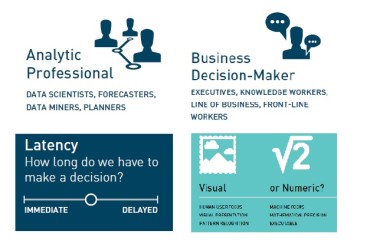
Businesses face two major AI staffing issues: Many engineers graduated before AI became a subject of study and younger AI enthusiasts don’t yet have needed experience.
Robert Munro, the vice president of machine learning (ML) at CrowdFlower, explains the situation clearly: “The potential for AI to change the way business works is limitless. But what will stall adoption is the lack of skilled engineers who understand how to put machine learning platforms to use.”
To corroborate Munro’s warning, IBM conducted a study in early 2017 that found that demand for annual data scientists, data developers,and data engineers would grow to 700,000 openings by 2020. The entire industry will add 364,000 positions by then, increasing the tally to 2,720,000 professionals. Better yet, these roles pay, on average, more than $100,000 per year.
That’s a massive number of lucrative jobs in an industry with remarkable growth opportunities, but they’re also among the most difficult for which to hire. Many positions require a master’s degree or Ph.D. in data science/analytics or a related field, multiple years on the job, or both. That can be a tough sell, considering how new AI and its associated disciplines are, and how quickly they have changed in the last few years.
There are two closely tied problems:
- Many successful and intelligent engineers graduated before AI became a subject of study in school
- Younger AI enthusiasts don’t yet have the experience to get the jobs they want.
[ Related: How Your Brain Will Produce Real-Time IoT Data Streams ]
Whether you’re an engineer hoping to make a lateral move, a CTO wanting to know more about how AI could change the future of your business, or an undergraduate wanting to snag one of those high-value jobs, there are a few reliable resources for learning the basics of this growing field.
Targeted coursework, online and otherwise
That’s where groups like CrowdFlower come in, with its new series of AI workshops that are specially crafted to help engineers from a variety of computer science backgrounds learn about leveraging ML platforms and creating their own simple AI models. This workshop is being held on October 10, 2017, in San Francisco, which makes it applicable only to a select few people who will be in the right place at the right time.
For those who won’t, Udacity holds a four-month Intro to Artificial Intelligence course, entirely for free. For more sophisticated — or motivated — students, there’s a Machine Learning Engineer Nanodegree, which costs between $199 and $299 per month. The more expensive version comes with a money-back guarantee that you’ll get hired in the field once you finish the six-month course. The thousand-dollar investment seems well-placed, considering the average salaries listed above.
For further study, there are many online courses on Coursera, plus some fun competitions on Kaggle.
Start learning the ‘right’ languages
Currently, Python is the clear leader for those who are looking for an easy-but-powerful route into programming AI applications. Python is not necessarily the best language for every use, or even every engineer, but knowing its basics will help with most coursework. Python also has compelling tools, like numpy, for making ML easier.
[ Related: Intel’s Loihi Speeds Up AI Chips Race ]
Scala, R, Java, and Lisp are also popular, as is the classic C++.
Programming languages aren’t the only ones you’ll need to understand, however—knowing specific mathematical “languages,” including linear algebra, differential calculus, and probability theory, will be extremely useful for more complex applications.
Play around with APIs
While coursework, textbooks, and fun exercises like The Pac-Man Projects from UC Berkeley’s CS department will teach you a great deal about the theory behind AI, actually building an AI application yourself is priceless when it comes to figuring out real-world uses.
Fortunately, there are plenty of APIs available, often for free with limitations, for precisely this purpose.
There is Google’s Cloud Machine Learning Engine, Wit.ai, Diffbot, IBM Watson, Amazon Machine Learning, Microsoft’s Cognitive Services and BigML, all of which offer easy ways to see how you could use AI in day-to-day activities, whether personal or for business.
[ Related: What’s the Difference Between Cognitive Computing and AI? ]
For example, you could use Wit.AI’s voice recognition engine to make an application that allows you to control your thermostat by voice. Or, use Azure Cognitive Insights to automatically review and give insight into a huge batch of photos from the latest company retreat for those with the most smiling faces. On top of an accessible API, many of these tools offer a more user-friendly “drag-and-drop” type interface, which will be useful for those who are just beginning to learn the power of AI.
The burden of learning the ins and outs of AI shouldn’t just be up to individuals, however. Those in positions of power at companies who want to introduce AI into their workflows should look to enable their most motivated employees, preferably with many of these same tools and opportunities. Given a little room to experiment, and maybe even have fun with the possibilities, you might just surprise yourself with how quickly your employees — or even yourself — at how quickly AI can become tameable.





























